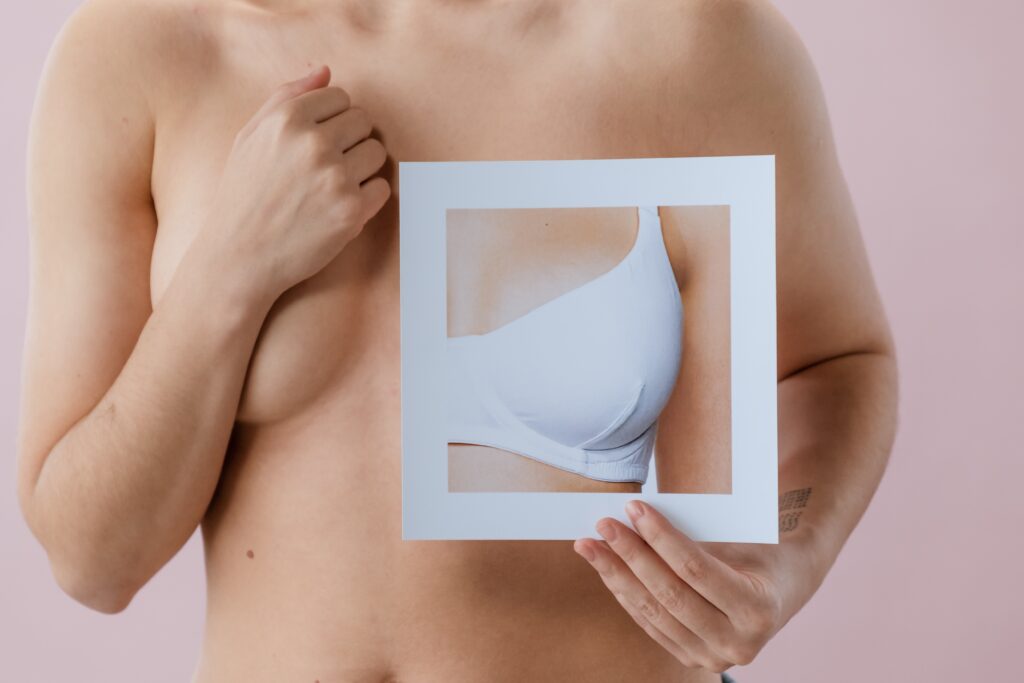Breast care is an integral aspect of women’s overall well-being and confidence. Understanding effective breast care practices is essential for preventing potential issues and embracing a healthy lifestyle. In this extensive guide, we will delve into various aspects of breast care, utilizing keywords like “breast care,” from self-examinations to lifestyle adjustments that contribute to breast health.
1. The Significance of Breast Health
Breast health is of paramount importance, extending far beyond mere physical wellness. The well-being of one’s breasts influences overall quality of life, irrespective of gender. Regular self-examinations, coupled with screenings, play a pivotal role in maintaining breast health, enabling early identification of potential anomalies, including but not limited to breast cancer.
Timely detection substantially enhances treatment prospects, underscoring the criticality of this facet. Beyond its physical implications, breast health profoundly impacts self-confidence and body image. A positive relationship with one’s body fosters emotional equilibrium and self-assurance. By underscoring the significance of breast health, we not only prioritize physical welfare but also cultivate an environment that champions proactive healthcare management and personal well-being.
2. Self-Examinations for Breast Care
Self-examinations for breast care are an integral aspect of maintaining breast health. By taking an active role in monitoring the condition of your breasts, you can detect any potential changes or abnormalities early, thereby enhancing the likelihood of successful treatment outcomes.
Why Self-Examinations Matter: Self-examinations empower individuals to become familiar with the normal look and feel of their breasts. This familiarity enables the timely identification of any deviations from the norm, which is crucial for early intervention, particularly in cases of breast cancer.
Performing a Self-Examination
Visual Inspection: Begin by visually examining your breasts and the surrounding areas. Look for any visible changes such as redness, dimpling, or swelling.
Tactile Examination: Using your fingers, gently palpate the breast tissue in a systematic manner. Feel for any lumps, thickening, or areas of tenderness. It’s important to examine the entire breast, including the underarm area.
Different Positions: Perform the examination in various positions, such as standing in front of a mirror, lying down, or even while showering. Different positions can help you better assess the texture and appearance of your breasts.
Frequency of Self-Examinations: Ideally, self-examinations should be conducted on a monthly basis. Choosing the same time in your menstrual cycle each month can help you notice consistent changes.
Complementary to Professional Screenings: While self-examinations are valuable for maintaining breast health, they should not replace regular professional screenings and mammograms. These medical procedures provide a comprehensive assessment of your breast health and should be conducted as recommended by healthcare professionals.
When to Seek Medical Advice: If you notice any unusual changes during a self-examination, such as new lumps, persistent pain, or changes in breast appearance, it’s crucial to consult a healthcare professional promptly. They can provide expert guidance and perform further evaluations if necessary.
3. Clinical Screenings for Breast Care
Timely Mammograms and Check-ups: Professional clinical screenings, including mammograms, are vital components of breast care. These screenings use advanced imaging techniques to identify even the slightest irregularities. Regular screenings can aid in early detection and treatment, significantly improving outcomes. These screenings play a pivotal role in maintaining breast health by identifying issues that might not be apparent through self-examinations alone.
Mammograms: Mammograms are a common and highly effective clinical screening tool for breast care. These X-ray images of the breast tissue can detect small tumors that might not be palpable during self-examinations. Mammograms are typically recommended for women over a certain age, and the frequency may vary based on individual risk factors.
Clinical Breast Exams: Clinical breast exams are conducted by healthcare professionals during routine check-ups. A trained medical practitioner examines the breasts and the surrounding areas for any unusual changes, such as lumps, thickening, or skin changes. Regular clinical breast exams are an integral part of proactive breast health management.
Breast Ultrasound: Utilizing sound waves, breast ultrasound generates images of the breast tissue. It can help distinguish between fluid-filled cysts and solid masses, aiding in diagnosis. Ultrasound is often used in conjunction with other screening methods to provide a comprehensive assessment.
Breast MRI: Breast magnetic resonance imaging (MRI) provides detailed images of the breast tissue. It is particularly useful for individuals at higher risk of breast cancer or those with dense breast tissue. Breast MRI can detect abnormalities that might not be visible on mammograms or ultrasounds.
Genetic Testing: Genetic testing assesses the presence of specific gene mutations, such as BRCA1 and BRCA2, which are associated with an increased risk of breast cancer. This screening can help individuals understand their risk and make informed decisions about preventive measures.
Clinical vs. Self-Screenings: Clinical screenings complement self-examinations by offering a more comprehensive assessment of breast health. While self-examinations are crucial for regular monitoring, clinical screenings provide a trained medical perspective that can identify subtle changes and potential concerns.
Consulting Healthcare Professionals: It’s important to consult with healthcare professionals to determine the appropriate timing and frequency of clinical screenings based on individual risk factors and medical history. Regular communication with medical experts ensures a tailored approach to breast care.
4. Breast Care During Different Life Stages
Nurturing Breast Health Through Life Stages: Maintaining breast health is a lifelong commitment that evolves with different stages of life. From adolescence to adulthood and beyond, nurturing breast health contributes to overall well-being and empowers individuals to take charge of their bodies.
Adolescence and Early Awareness: During adolescence, it’s essential to establish a foundation of awareness and self-care. Learning about breast development and understanding what is normal lays the groundwork for future breast health practices.
Young Adulthood and Self-Examinations: In young adulthood, incorporating regular self-examinations is crucial. Getting to know the normal look and feel of one’s breasts facilitates the early detection of any changes. Practicing these examinations monthly creates a proactive habit.
Pregnancy and Breastfeeding: Pregnancy and breastfeeding cause notable transformations in breast tissue. Engaging in gentle massages, using proper support, and seeking expert guidance can help maintain breast health during these transformative periods.
Adulthood and Clinical Screenings: As individuals transition into adulthood, clinical screenings such as mammograms and clinical breast exams become vital. These comprehensive evaluations, guided by healthcare professionals, enhance the chances of early detection.
Menopause and Continued Vigilance: Menopause introduces hormonal shifts and potential breast changes. Regular exercise, a balanced diet, and consistent self-examinations remain essential. Engaging in discussions with healthcare providers about hormone replacement therapy and risk factors is advised.
Golden Years and Ongoing Care: In later life, prioritizing breast health remains crucial. Maintaining a healthy lifestyle, staying up-to-date with screenings, and advocating for one’s well-being ensure that breast health is a lifelong commitment.
5. Lifestyle Choices Impacting Breast Care
Integrating Healthy Habits into Your Routine: The choices we make in our daily lives have a profound impact on our overall health, including the well-being of our breasts. By adopting healthy lifestyle habits, we can significantly contribute to the maintenance of optimal breast care and reduce the risk of potential issues.
Balanced Diet: A nutritious and balanced diet rich in fruits, vegetables, whole grains, lean proteins, and healthy fats provides essential nutrients that support breast health. Antioxidants and vitamins found in these foods play a crucial role in reducing the risk of cellular damage and promoting overall wellness.
Regular Exercise: Engaging in regular physical activity not only helps maintain a healthy body weight but also improves circulation and supports the lymphatic system. Exercise has been linked to a decreased risk of breast cancer and contributes to overall breast care.
Limiting Alcohol Intake: Limiting alcohol consumption is advisable as excessive drinking has been associated with an increased risk of breast cancer. If alcohol is consumed, it’s recommended to do so in moderation.
Avoiding Smoking: Smoking not only negatively impacts overall health but also increases the risk of breast cancer and other health issues. Quitting smoking is a crucial step towards promoting breast care and general well-being.
Managing Stress: Chronic stress can influence hormonal balance and impact overall health, including breast health. Practicing stress management techniques such as meditation, yoga, and mindfulness can contribute to better breast care.
Supportive Undergarments: Wearing well-fitting and supportive bras can help maintain breast shape and reduce discomfort. Proper support is especially important during physical activities and pregnancy.
Breastfeeding: For mothers, breastfeeding provides multiple benefits, including reduced risk of breast cancer. It also supports bonding with the baby and aids in postpartum recovery.
Regular Check-Ups: Scheduling regular check-ups with healthcare professionals ensures that any potential breast concerns are promptly addressed. Clinical screenings and discussions with medical experts form an integral part of comprehensive breast care.
6. Optimal Support: Selecting the Right Bra for Breast Care
Comfort, Support, and Breast Health: Choosing the right bra is not just about comfort and style; it’s a fundamental aspect of breast care. A well-fitting and supportive bra not only enhances comfort but also contributes to maintaining the health and shape of the breasts. Understanding the factors that influence bra selection can lead to better breast care and overall well-being.
Importance of Proper Support: A supportive bra helps distribute the weight of the breasts evenly, reducing strain on the breast tissue and ligaments. This support is especially crucial during physical activities, pregnancy, and breastfeeding.
Factors to Consider:
Size: Proper bra sizing is essential. Ill-fitting bras can lead to discomfort, chafing, and potential tissue damage. Regular measurements help ensure you’re wearing the correct size.
Band Fit: The band should fit snugly around the ribcage, providing the majority of the support. The band should sit evenly around your body, without riding up or creating unevenness.
Cup Shape: Different cup shapes accommodate various breast shapes. Ensure the cups fully encase the breasts without creating gaps or spilling over.
Strap Comfort: Straps should rest comfortably on the shoulders without digging in or slipping off. Adjustable straps allow for personalized comfort.
Underwire Consideration: Underwire bras provide additional lift and support for some individuals, but they should never dig into the breast tissue. A proper fit is crucial.
Material and Breathability: Choose bras made from breathable materials that reduce moisture and irritation, especially during physical activity.
Special Considerations:
Sports Bras: For physical activities, opt for sports bras that provide maximum support and minimize breast movement to prevent discomfort and tissue strain.
Maternity Bras: During pregnancy and breastfeeding, maternity bras with extra support and easy-access features are essential for adapting to changing breast sizes.
Regular Assessment: Lifestyle changes, weight fluctuations, and pregnancy can all impact bra size. Regularly reassessing your bra size ensures that you’re always wearing the best-fitting and supportive option. Selecting the right bra is an integral part of breast care. Prioritizing proper support, comfort, and fit can enhance overall breast health and well-being. By understanding the factors that contribute to optimal support and choosing bras that cater to your specific needs, you can actively contribute to the long-term health of your breasts.
7. Clearing the Air: Debunking Common Myths About Breast Care
Misinformation about breast care can lead to confusion and unnecessary worry. To promote accurate knowledge and proactive health practices, it’s essential to dispel common myths surrounding breast care. By separating fact from fiction, individuals can make informed decisions for their well-being.
Myth 1: Wearing Underwire Bras Causes Breast Cancer:
Fact: There is no scientific evidence linking underwire bras to breast cancer. The type of bra you wear does not influence your risk of developing breast cancer.
Myth 2: Only Women Need to Worry About Breast Health:
Fact: While breast cancer is more common in women, men can also develop it. Everyone, regardless of gender, should be aware of their breast health and engage in regular self-examinations and screenings.
Myth 3: Deodorants and Antiperspirants Lead to Breast Cancer
Fact: There is no conclusive evidence supporting the claim that deodorants or antiperspirants cause breast cancer. The link between these products and cancer remains unproven.
Myth 4: Breast Cancer Risk Is Exclusive to Women with Family History
Fact: While a family history of breast cancer can increase the risk, the majority of individuals diagnosed with breast cancer have no family history. Many other factors, including lifestyle and genetics, contribute to breast rcancer risk.
Myth 5: Small Breasts Are Less Prone to Breast Cancer:
Fact: Breast size does not determine breast cancer risk. Factors like genetics, age, hormone levels, and lifestyle play a more significant role in determining risk.
Myth 6: Breast Implants Prevent Breast Cancer Detection:
Fact: Breast implants may slightly complicate the process of mammography, but they do not prevent breast cancer detection. Radiologists have techniques to ensure accurate imaging for individuals with implants.
Myth 7: Finding a Lump Means You Have Breast Cancer:
Fact: Many breast lumps are benign (non-cancerous). While any unusual changes should be checked by a healthcare professional, most lumps are not cancerous.
Myth 8: Mammograms Are Always Painful:
Fact: Mammograms may cause discomfort, but they are generally not excessively painful. Newer technologies and experienced technicians can make the procedure more comfortable.
Conclusion:
In navigating the intricate landscape of breast care, one finds not only a path to health but also a journey towards confidence and self-empowerment. The insights garnered from this comprehensive breast care guide emphasize the significance of proactive measures – from self-examinations to clinical screenings – in safeguarding the well-being of our breasts. By debunking myths, embracing accurate knowledge, and adopting healthy lifestyle choices, individuals can foster a sense of control over their bodies.
As we weave together awareness, education, and self-care, we cultivate not only physical vitality but also a profound appreciation for our bodies’ resilience. Prioritizing breast health is an embodiment of self-love and respect, paving the way for a life imbued with health, confidence, and a lasting sense of well-being.
If you like to read my other article on women care follow the link below:
Exploring the Top Vaginal Care Practices Trending in 2023







5 thoughts on “Empowering Wellness: Your Essential Breast Care Guide for 2025”